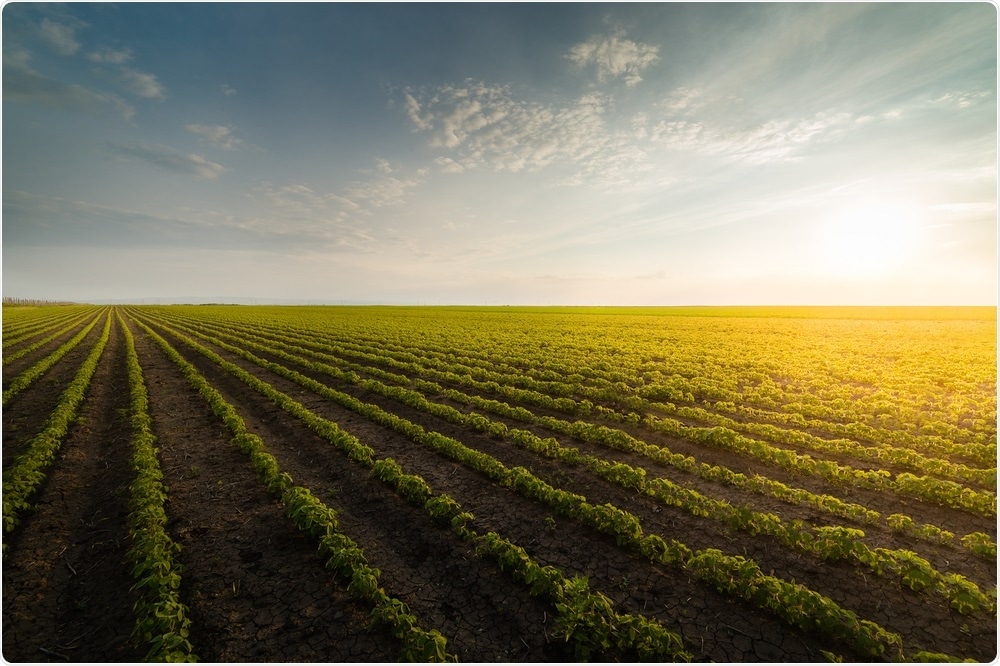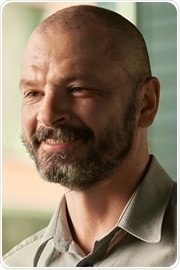Please could you introduce yourself and tell us about your role at Kray Technologies?
I have been the founder, CTO, and CEO of Kray Technologies since 2014. My background is in both R&D and entrepreneurship in designing complex and precise systems.
What are some of the main aims for Kray Technologies within the agricultural industry?
We would like to bring something new. The objective is the radical improvement of farmers’ crop management and protection capabilities. Such an improvement would have economic, societal, environmental, and climate change mitigation impacts.
This objective can be reached by the world’s first global crop protection and fertilization application company with the potential to replace ground sprayers and agriculture planes with an industrial ultra-low volume (ULV) drone application technology.
You have created the world's first digital and full unmanned drone crop sprayer. How did you develop this and how does it work?
Kray Protection project originated in 2015, and since then three UAS generations have been developed. Behind the stage, there is a lot of hard work with many people contributing to our project. This work is necessary due to the logiс the solution is based on.
Ultra-low volume application is at the core of cost reduction as it helps to keep things small and inexpensive. In ULV applications, the solution concentration is very high, and active ingredients applied are just slightly diluted. Why have we not used it on an industrial scale since its invention in the 1960s?
The answer is simple and complex. ULV applications work well for the vast majority of ingredients as long as good spraying coverage is maintained, which means the droplet size should be decreased significantly so that a higher number of droplets provide the same coverage area for a high solution concentration.
But small droplets are easily blown away by the wind, so there needs to be some way besides gravity to control their deposition. Typically, this drift control is achieved in the drones available on the market by spraying within the vertical airflow from rotors.
However, it limits the flight speed (and productivity) to the level comparable to vertical airflow speed, which is typically 3-4 m/s, so at higher speeds, drifts cannot be controlled anymore. That's why, while achieving safety, we end up with no industrial productivity this way.
We can also charge droplets electrostatically creating a potential to the ground. This works independently of flight speeds, so, technically, a fast aerodynamically efficient aircraft can be developed achieving the industrial productivity needed – hundreds of hectares per day.
The problem is that the electrostatic force fades quickly with distance so the flight should be at very low altitudes, less than 2 meters, and ideally about 1 meter, in order to prevent drifts. Designing such an aircraft requires non-traditional approaches and is a technically complex task.
Kray Protection UAV is a precisely controlled (<10 cm errors) high speed (30 m/s) VTOL compound multirotor drone. It has a 4-meter wingspan and carries up to 80% of its weight by the fixed-wing lift force.
Controlled precision is achieved in all flight speed modes and allows high-dynamic maneuvers so Kray is perfectly suited for both zoom-turn field processing and field borders in-place turns. 30 m/s combined with a 5-meter application strip gives about 60 Ha/hour (or 600 Ha/day) operational productivity.
Kray UAV flies steadily at 1 meter above the crop, creating high-quality droplet mist with rotary atomizers, and charges droplets with an electrostatic charge. Rotary atomization helps to reduce drift further as the droplets produced are all of the same size.
This way, with Kray, the reliable safe drift buffer zone can be reduced to a few meters for almost any active ingredient. This reduces yield losses on the field borders and further increases overall economic efficiency.
The challenge is, however, in flying at a high speed and such a low altitude. Kray created a hybrid computer vision system using cameras and lidar, so it reconstructs the dense data of the terrain relief 100 meters ahead. It allows precise and safe flight control based on advancing trajectories that plan their smart execution. So the control of the aircraft is fully automated.
Kray Protection - short project explanation
What are the advantages of using the Kray Protection drone compared to other traditional methods used to deliver fertilizers and pesticides?
Kray Protection cuts current application costs by 90% of the current ground sprayers and ag planes available. This means the farmer can make 10 times more sprayings for the same budget.
It opens a huge number of ways to protect crops and better maximize yields close to the theoretically achievable level, as the key bottleneck which limits crop management efficiency is removed.
How has technology advanced the agricultural industry over the last 20 years?
There was a huge shift in the way farmers get information on their fields. GIS technologies together with data acquisition and processing changed the point of view for crop management.
At the same time, the huge advancements in biosciences brought us a deeper understanding of crops and pests biomechanics, delivering new fertilization, crop protection, and crop management means including; organic pesticides, PGRs, micronutrients, and split fertilizations.
Farmers now further understand the soil processes and realize the necessity of soil protection, recovery, and regeneration, which is exacerbated with the climate change impact.
Meanwhile, at the end of execution, the development is evolutionary rather than a qualitative leap. Many of the knowledge advancements are going through the bottleneck of too-hard implementations. While for the traditional technology maps, the methods of crop management are just slightly improvable due to application cost limitations. The new technology maps including no-till farming deliver significantly better results if application cost limitation was removed.
The whole new precision agriculture dimension of application time becomes available once the radical reduction of cost is achieved so farmers can apply whatever they need whenever they need. That’s what we are working on in Kray.
As more and more farmers are looking to improve their yield and productivity whilst ensuring profitability, do you see more people turning to technology to help?
The world’s population constantly demands more food. From the demand side, the yield increase needed is more than 40% by 2050, taking into account the negative impact of climate change.
At the same time, FAO experts estimate the technology-induced yield shift is just 20% to 30% during the same period. If we do not achieve the remaining yield growths, either a collapse on the demand side or a big shift into unsustainable practices – mass deforestation, excessive nitrogen fertilization, exhaustive soil use – will be imminent. The scale of the failure can completely undercut our efforts to maintain universal human rights and dignity, so it would be a civilizational failure.
Could we avoid it? Yes, definitely. If we take a look at yield gap maps, the median residual potential for yield increase is still about 30-40% for developed countries, but much more, up to 300-400%, for developing countries that need it the most.
The issue, however, is how to deliver the new, more productive, technology to those countries while making the growth sustainable. Given the tight time frame of demand growth and climate change processes, the most efficient way would be to deliver services providing the most crucial technology for achieving yield growths.
One of the most important services would be the inexpensive spraying, which allows timely crop protection and frequent split fertilization resolving two main bottlenecks for the yield increase in sustainable agriculture.

Image Credit: Fotokostic/Shutterstock.com
How will climate change and sustainable farming practices affect the future of agriculture?
Climate change is just part (yet perhaps the most important, as it is severely time-limiting) of the whole socio-earth system work and self-interaction.
Thus, poverty stimulates fast solutions of exhaustive agriculture, which leads to land degradation and desertification together with high soil emissions, which contribute to climate change, in turn, worsening poverty and accelerating land degradation.
All these feedbacks could be reverted, fully or partially, with sustainable practices, of which no-tillage farming is the most important (as it simultaneously protects and regenerates the soil, and reduces emissions). While some countries adopted it successfully at a large scale, the overall amount of no-till acreage is just a few percent of global cropland.
The blocking challenges of mass switching to no-till farming are higher yield variability and transitional yield drops until the soil structure improves, and greater yields are available.
These challenges could be addressed efficiently with foliar fertilization (as nitrogen fertilizers degrade faster in undisrupted, microbial-rich soil) which should be done in many split applications to achieve full uptake. Also, crop protection is more complex in no-till farming due to the higher potential of pest manifestation.
Both problems could be addressed by the adoption of new spraying technology.
What does the future of agriculture look like to you?
It was said that a farmer typically makes 40 decisions per life on average. If you count that a farmer cannot pivot from the crop that is already growing, he could just pick up the appropriate technology map - a plan for the season - and modify it a little, if any, during the season. Technology should be able to make more of these decisions available for him.
We should be able to deliver the precise amount of precise crop management at the precise time it is needed.
We have almost every part of the puzzle – the ability to gather the data almost in real-time, the automation to generate decisions, the systems which integrate all together. The only missing part is the economically viable way to apply the necessary substance to the crop at any time.
In the not-so-far future, machinery will come into the field twice – once to seed and then once to harvest.
In the not-so-far future, during most of the time in between, you will see fast electric drones flying low over fields making almost no noise.
Most times, these drones will sense leaf nitrogen content remotely and determine diseases, weeds, and pests and choose the appropriate amount of solution for spraying - making the decisions millions of times per day, extending a farmer’s capability to decide, care, and grow.
What are you looking forward to at Kray Technologies?
We are just looking forward to making all of these ideas a reality, even in distant parts of the world. We were working on it for a while, but there’s a long road ahead. For sure, there will be much more people sharing this vision when it happens. So with or without Kray, if you are on this page now, you are not alone and hopefully, you’ll never be.
Where can readers find more information?
Short explanation video https://bit.ly/KrayProtectionShortExplanation
Official website http://kray.technology
About Kray Technologies
Dmytro Surdu is Kray's founding CTO and CEO who worked through his career on designs of automated measurement systems for national standards of several countries including NIST, USA, and technical architectures for systems of high complexity.
For the last 10 years, Dmytro’s main focus is critical real-time systems of high precision and high autonomy precise drones. About 15 major manuscripts were started by Kray in 2014-2020.
Kray has developed a world-first spraying drone that covers up to 1200 acres a day and cuts application costs by 90% to about 1 dollar per acre. It allows farmers to eliminate yield losses and improve precision agricultural techniques, enabling new frequent fertilization technologies that promise significant yield increases.